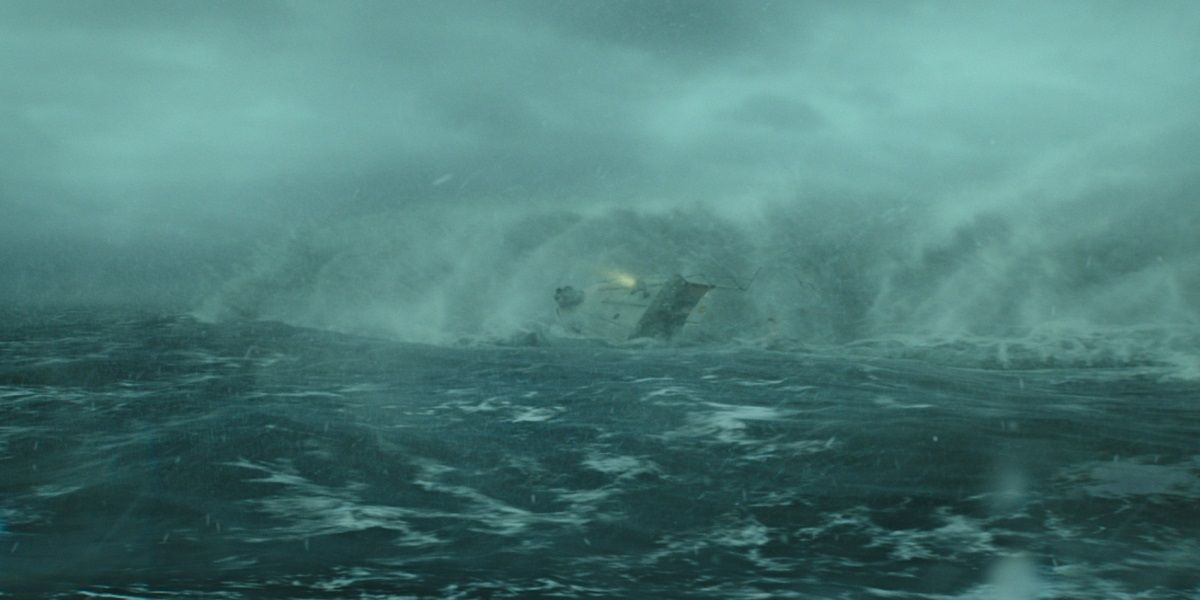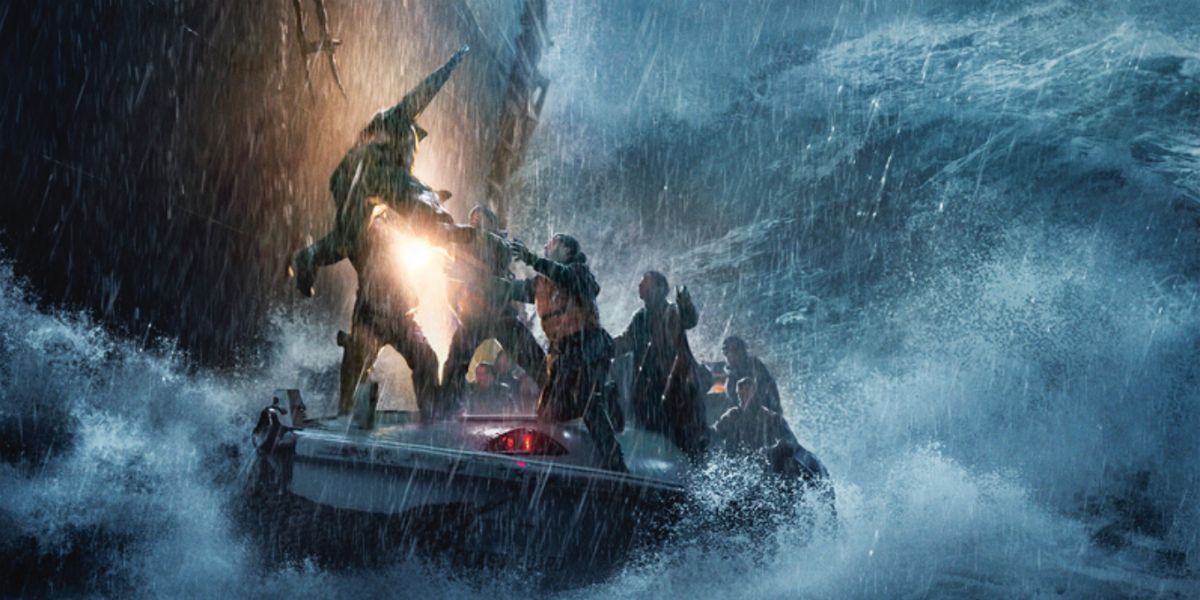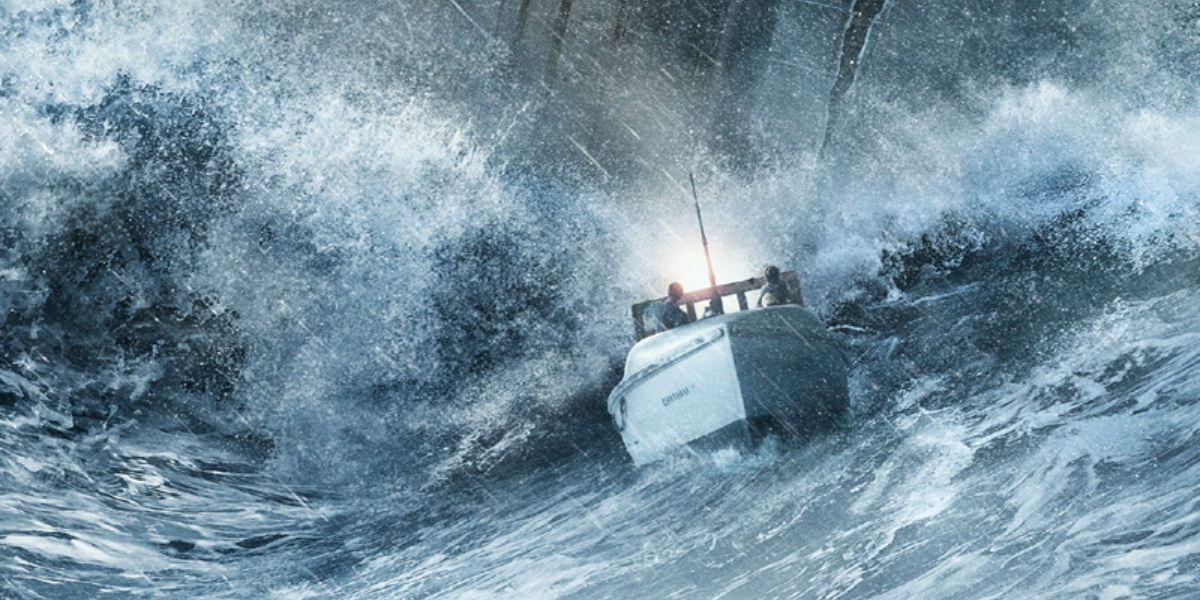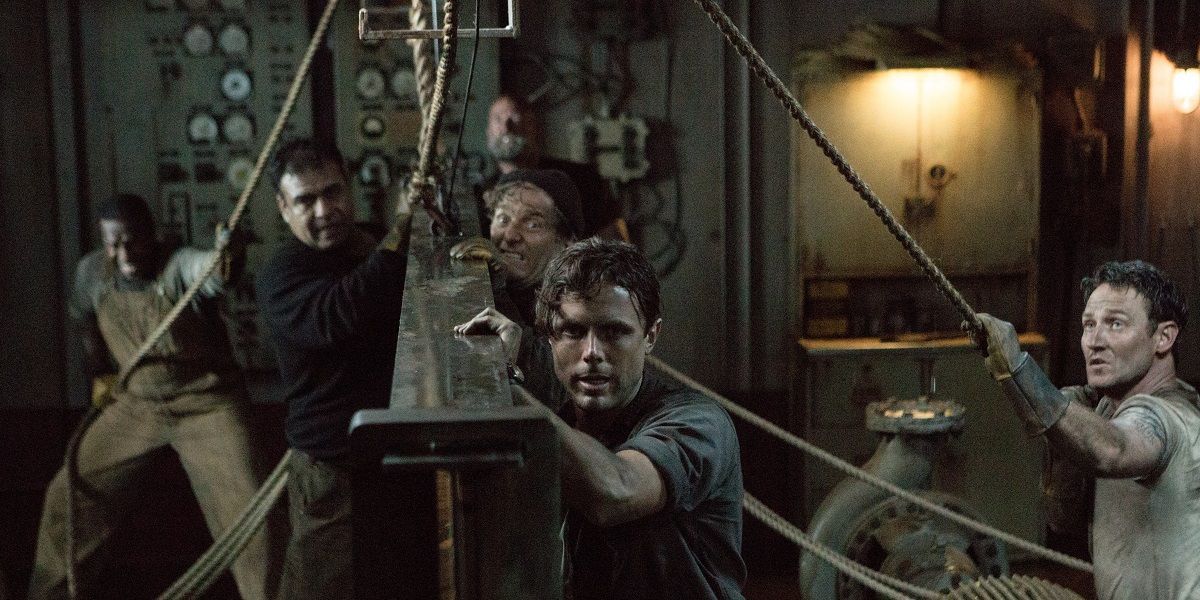If adapting the tale of the 1952 SS Pendleton rescue - in which officers in the Coast Guard rescued the crew of the SS Pendleton and the SS Mercer off the coast of Massachusetts during a vicious nor’easter - for the movies sounds like a no-brainer, that’s because it was: when Casey Sherman, author of the 2009 nonfiction chronicle of the same name, presented producer Dorothy Aufiero with a copy of his book, she knew she had something special on her hands almost immediately. It just took some persuading from Sherman, not to mention Aufiero’s due diligence.
“It was shortly after the success of The Fighter,” she said to Screen Rant and an assemblage of other journalists during a trip to the set of Craig Gillespie's The Finest Hours back in 2014. “I was in a meeting and I was looking at another project that actually is a book that Casey Sherman had done…I was in a meeting to just meet the author and I determined it wasn’t really the story I was interested in making. You have to be completely passionate because they take a long time.” Sherman apparently took the rejection on that other project in stride, because as he and Aufiero walked out together, he followed up by handing her The Finest Hours, though even his confidence didn’t win her over right away; she had to read it herself first. “I’m looking at the cover and there’s this tanker sinking and I’m thinking this is not anything I’m remotely interested in,” she told the group.
“So I said that I’d look at it and he said, ‘I think that it’s Disney.’ So I drove home and later in the afternoon I was flipping through it and I was completely blown away by the story. It was about these courageous people, it was about heroes. It was so inspirational. Everything was just so cinematic,” she added. “You couldn’t make it up.”
Once Aufiero was on-board with the idea of turning The Finest Hours into a film, bringing on Jim Whitaker as co-producer didn’t take much persuading. “Dorothy brought it to our company, to me,” he recalled. “We have a small company, and we took it to Disney. I have to say, it wasn’t a real struggle. They saw it. They saw what it was and said they wanted to do it.” It helps that he agreed with Aufiero on the story’s inspirational quality; that was one of his biggest draws for getting involved after first talking with Aufiero in the summer of 2011. “I read the story, and it’s an incredibly inspirational story, so it wasn’t very hard to immediately say, ‘I want to tell this story,’” he explained. “When you can read and hear about a true story that has so many heroic moments, and then comes to this great inspirational point, it’s hard not to want to make something like that.”
That’s a thought worth mulling over. On paper, the stuff of The Finest Hours sounds like pure fiction. When the aforementioned storm struck south of Cape Cod, both the Mercer and the Pendleton, a pair of World War II-era T2 tankers, split in half from brutal hurricane-strength wind as well as damn near arctic temperatures. Turns out that the Mercer and the Pendleton, like many ships of their time, were made using a type of steel boasting a high sulfur content, which sounds meaningless on paper but proved dangerous in practice; exposure to extreme cold had a habit of turning the steel brittle. (The boats were nicknamed “Kaiser’s coffins,” according to Whitaker.) When you’re out on open water in bad weather, that’s nothing short of calamitous, and so it was with the Mercer and the Pendleton, the latter of which sent out distress calls that went unanswered and unheard by all - except the Lifeboat Station in Chatham.
And that’s where the film’s principal characters - Boatswain’s Mate First Class Bernard Webber (Chris Pine), Engineman Third Class Andrew Fitzgerald (Kyle Gallner), Seaman Richard Livesey (Ben Foster), and Seaman Ervin Maske (John Magaro) - each come in, motoring out into the ocean to save the T2 crews. It’s a classic tale of humble heroism that, as Whitaker put it, has all the qualities necessary to translate to the big screen. “It feels like a great, visual movie story,” he replied when asked about the details of the Pendleton rescue mission (which, amazingly enough, comprised four different missions instead of merely one). “From my position of wanting to produce something, you go, ‘Oh my god, I want to make that.’”
“I always feel like I’m lucky enough to be involved in true stories in my career, and I always feel like, when you find a story you read it and you go, ‘Oh, that’s amazing story,’” he continued. “But when you find out it’s true it just takes it to another level. That’s why I was so drawn to this one, because it’s got the elements of truth.” Truth, as well as authenticity, are both key terms on The Finest Hours’ set, and one of the driving philosophies behind the film’s production. For Whitaker, screenwriters Paul Tamasy, Eric Johnson, and Scott Silver, director Craig Gillespie, and the extensive cast - not just Pine, Gallner, Foster, and Magaro, but Eric Bana, Holliday Grainger, Casey Affleck, and Josh Stewart - making The Finest Hours as honest a moviegoing experience as possible was paramount.
“It’s been the thing that’s defined what we want the movie to be,” said Whitaker. “We’ve got a great production designer, Michael Corenblith, who really believes in that. Craig believes in that, we all believe that that was a really important factor, because it’s a true story, and you have to be immersively in a believable world, and the more believable it is, the more you’re with it and the more you can emotionally experience what they experience. That’s the goal.”
But determining that the film must be made, and that it must be made with attention to authenticity, is only part of the battle. After that, there lies the challenge of whipping up a nor’easter within the confines of a movie set, which, if for anyone who has lived through a storm of that magnitude, is no small feat. Big, chunky clouds muscle out the sun, and the sky opens up on the world below. In a best case scenario, precipitation adds up to little more than mist, which is manageable if not ideal. The rest of the time, it’s torrential rain or snow, and if you’re lucky, the snow is of the light and fluffy variety rather than the heavy wet sort. Basically, nor’easters are nasty business even if you’ve battened down the hatches at home, so the idea of even invoking an artificial nor’easter for the sake of the movies sounds as crazy as it does dangerous - and that’s to say nothing of getting all of the period details exactly right, either.
So what does a film production do to authoritatively check off those boxes? It certainly helped that The Finest Hours’ crew had the opportunity to mine old parts off of a defunct ship; in praising the efforts of the film’s set decorators, Whitaker described their good fortune in coming across a T2 tanker that they could use in their design. “T2 tankers are difficult to find, and they found a T2 tanker that had been put into salvage, and they went down there and basically got into the bowels of it, pulled all the pieces of the tanker out, and shipped it up here so we could put it into all of our sets to make the engine room, the inside of the emergency tiller station, and all of that as authentic and real as possible.” (In another stroke of good luck, they were able use the USS Salem, a Chester class Scout cruiser and a Boston-area treasure, for interior shots, and also borrow pieces from the ship while it was under renovation.)
But it may have helped even more that the team had the great fortune to welcome survivors of the rescue mission, including Andy Fitzgerald (played by Kyle Gallner), to the set to check out the designers’ efforts. Both Fitzgerald and Mel Gouthro (portrayed by Beau Knapp) were able to stop by on Veteran’s Day in 2014, which proved as meaningful an experience for them as for the people responsible for recreating the event and the tankers themselves. “I’m sort of paraphrasing their words,” admitted Whitaker, “but I think they’re very appreciative of the attention to detail and the effort. As you’ve been walking around the set like this, there’s hundreds of people and everyone has a very specific job, and paying close attention to detail of all of that, and they can see all of that, and I think there's a lot of appreciation for that, gratitude for that.”
Aufiero, meanwhile, got to tour Fitzgerald around the tanks where the reproductions of the tankers were settled, and along the way he gave her the best validation of all. “I had showed him the tank where we have a portion of the Pendleton hull and we were rescuing some of the sailors off of it. Andy saw that and I said ‘Andy, is this what it looked like when you were…’ He said, ‘That’s exactly what it looked like.’” While Fitzgerald and Guthro are the only people who can really vouch for accuracy in craft, it was clear walking through the set ourselves just how much time and focus went into getting it all right. One look at the engine room, which was in the midst of being broken down on our visit, and anybody would swear they were in the bowels of real-deal tanker. Even on close inspection, the guts of the Pendleton - the nameplates, the piping system, the levers and valves - looked as though they were lifted right out of a T2, instead of fabricated from scratch in a Quincy warehouse.
But there’s more to getting The Finest Hours right than just its production elements: there are the character elements, and action elements, and of course the elements themselves. To hear Aufiero tell it, churning out macro-scale storms in a backlot doesn’t take much more than a few fans, several thousand gallons of water, and a gimbal - a pivoting support system that lets whatever object resting upon it move about on a single axis. “We’re doing it on this motion base and this is a Ritter fan making it snow and this is a dump tank,” she said. “This can hold 2,200 gallons of water and it comes shooting down this way or this way. Each little piece that they’re shooting when they cut it together will be a fluid sequence.” Inside the warehouse where filming took place, we saw exactly what Aufiero meant - a recessed bit of flooring housed a gimbal at its center, and a motorized lifeboat containing Pine, Foster, Gallner, and Magaro sat right on top of it.
Sounds like an easy, no-fuss method of bringing the storm to life, although as the cast members make clear, there’s nothing easy about getting pummeled by waves of icy cold H20. It’s all in a day’s work when you’re telling a real story about real people who, more than sixty years ago, put their lives in real jeopardy just to answer the call of duty.
NEXT: The Finest Hours Cast Interviews
A heroic action-thriller, “The Finest Hours” is the remarkable true story of the most daring rescue mission in the history of the Coast Guard. Presented in Digital 3D™, Real D 3D and IMAX® 3D, the film will transport audiences to the heart of the action, creating a fully-immersive cinematic experience on an epic scale. On February 18, 1952, a massive nor’easter struck New England, pummeling towns along the Eastern seaboard and wreaking havoc on the ships caught in its deadly path, including the SS Pendleton, a T-2 oil tanker bound for Boston, which was literally ripped in half, trapping more than 30 sailors inside its rapidly-sinking stern. As the senior officer on board, first assistant engineer Ray Sybert (Casey Affleck) soon realizes it is up to him to take charge of the frightened crew and inspire the men to set aside their differences and work together to ride out one of the worst storms to ever hit the East Coast. Meanwhile, as word of the disaster reaches the U.S. Coast Guard station in Chatham, Massachusetts, Warrant Officer Daniel Cluff (Eric Bana) orders a daring operation to rescue the stranded men. Despite overwhelming odds, four men, led by Coast Guard Captain Bernie Webber (Chris Pine), set out in a wooden lifeboat with an ill-equipped engine and little, if any, means of navigation, facing frigid temperatures, 60-foot high waves and hurricane-force winds.
Disney’s “The Finest Hours” is the unforgettable story of the Coast Guard’s courageous mission, which is directed by Craig Gillespie and stars: Chris Pine; Academy Award® and Golden Globe® nominee Casey Affleck; Ben Foster; Holliday Grainger; John Ortiz; and Eric Bana. Produced by Jim Whitaker and Dorothy Aufiero, the screenplay is by Oscar® nominee Scott Silver and Oscar nominees Paul Tamasy & Eric Johnson based on the acclaimed non-fiction book of the same name by Casey Sherman and Michael J. Tougias. Doug Merrifield serves as executive producer. “The Finest Hours” storms into U.S. theaters on January 29, 2016 in Digital 3D™, Real D 3D and IMAX® 3D.
The Finest Hours opens in U.S. theaters on January 29th, 2016.




